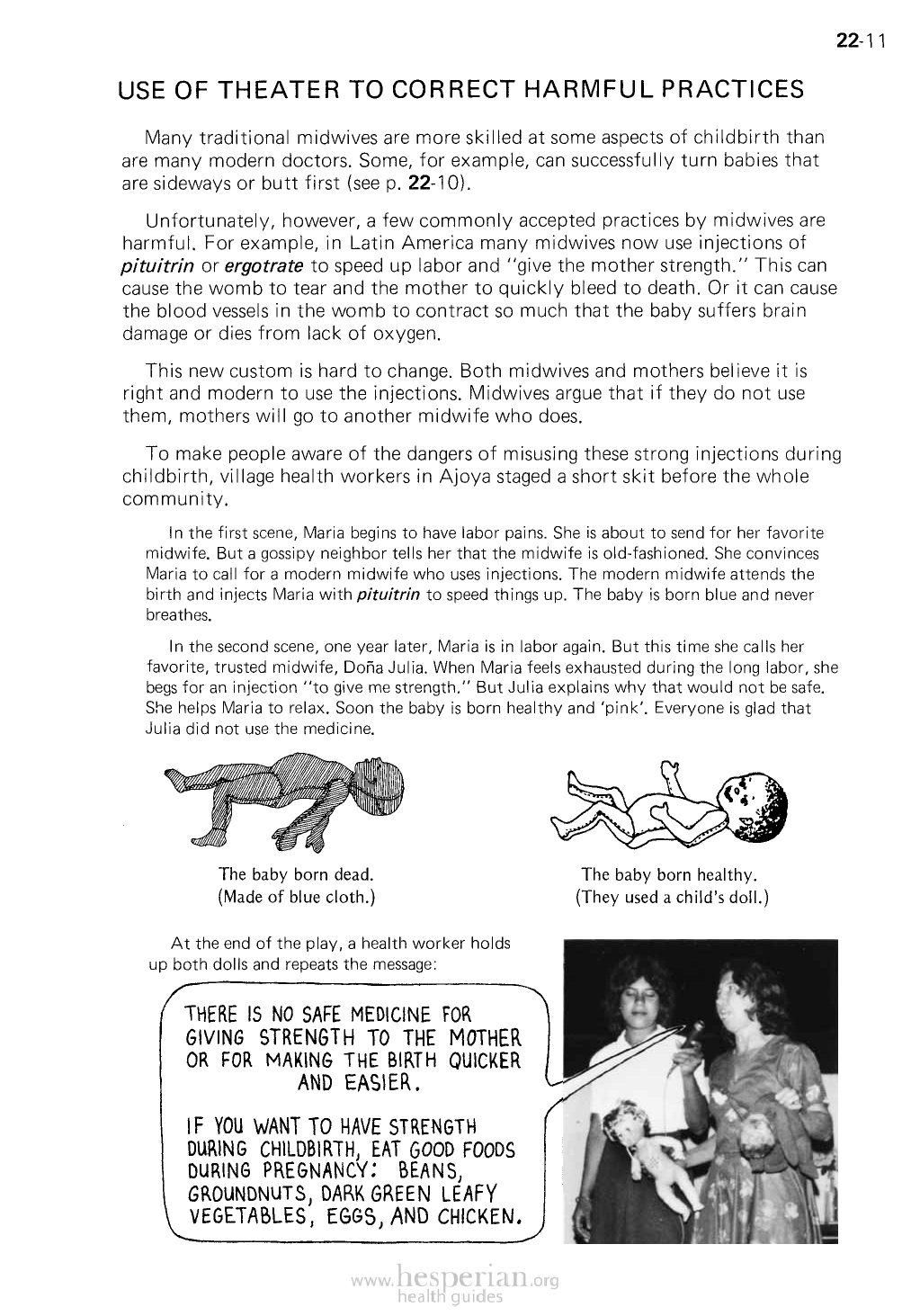
22-13
USE OF THEATER TO CORRECT HARMFUL PRACTICES
Many traditional midwives are more skilled at some aspects of childbirth than are
many modern doctors. Some, for example, can successfully turn babies that are
sideways or butt first (see p. 22-10).
Unfortunately, however, a few commonly accepted practices by midwives are
harmful. For example, in Latin America many midwives now use injections of
pituitrin or ergotrate to speed up labor and “give the mother strength.” This can
cause the womb to tear and the mother to quickly bleed to death. Or it can cause
the blood vessels in the womb to contract so much that the baby suffers brain
damage or dies from lack of oxygen.
This new custom is hard to change. Both midwives and mothers believe it is right
and modern to use the injections. Midwives argue that if they do not use them,
mothers will go to another midwife who does.
To make people aware of the dangers of misusing these strong injections during
childbirth, village health workers in Ajoya staged a short skit before the whole
community.
In the first scene, Maria begins to have labor pains. She is about to send for her
favorite midwife. But a gossipy neighbor tells her that the midwife is old-fashioned.
She convinces Maria to call for a modern midwife who uses injections. The modem
midwife attends the birth and injects Maria with pituitrin to speed things up. The
baby is born blue and never breathes.
In the second scene, one year later, Maria is in labor again. But this time she calls
her favorite, trusted midwife. Dona Julia. When Maria feels exhausted during the
long labor, she begs for an injection “to give me strength.” But Julia explains why
that would not be safe. She helps Maria to relax. Soon the baby is born healthy and
‘pink’. Everyone is glad that Julia did not use the medicine.
The baby born dead.
(Made of blue cloth.)
At the end of the play, a health worker holds
up both dolls and repeats the message:
The baby born healthy.
(They used a child’s doll.)